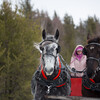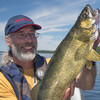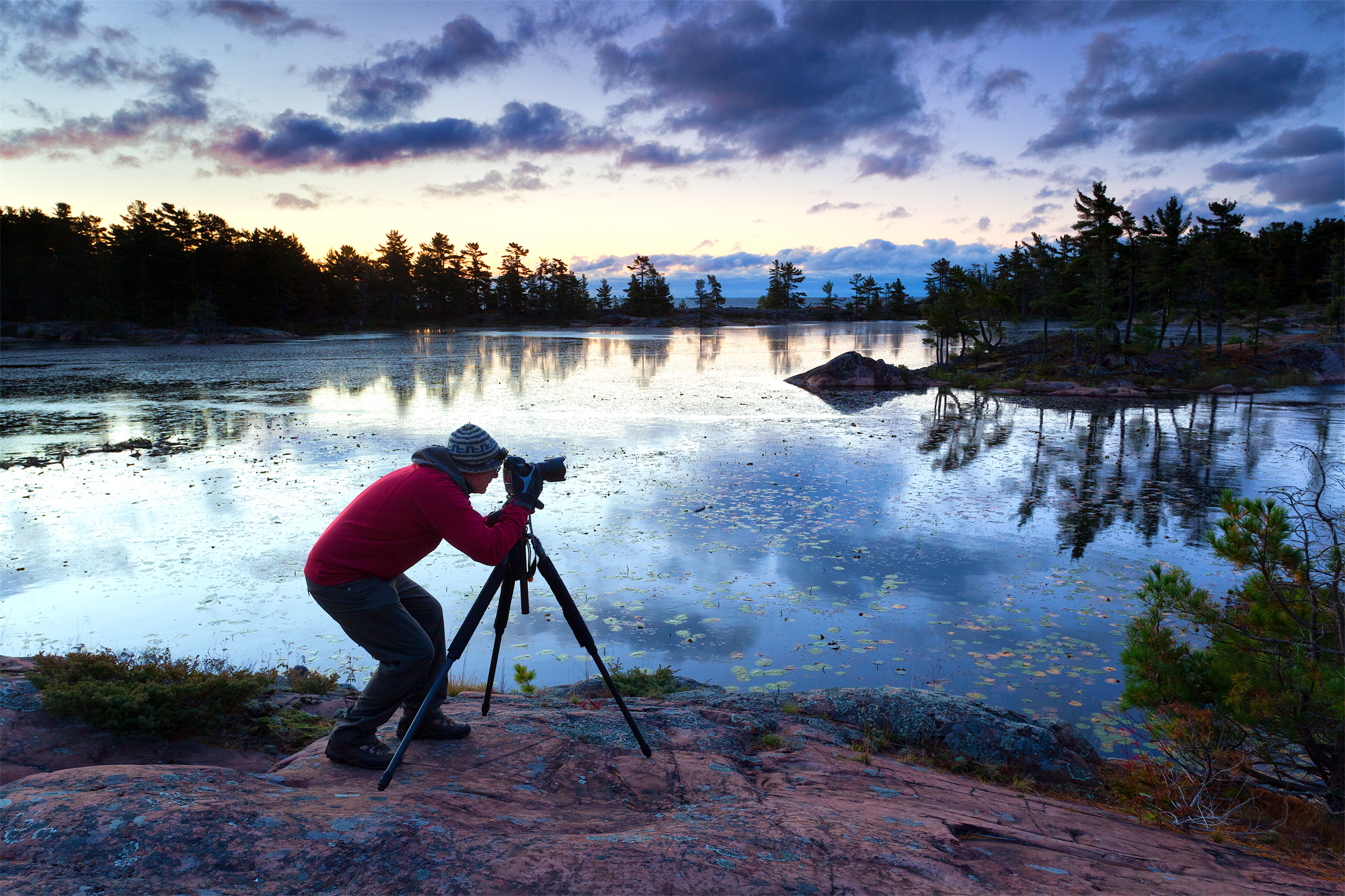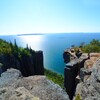
James Smedley's Top Seven Group of Seven Moments
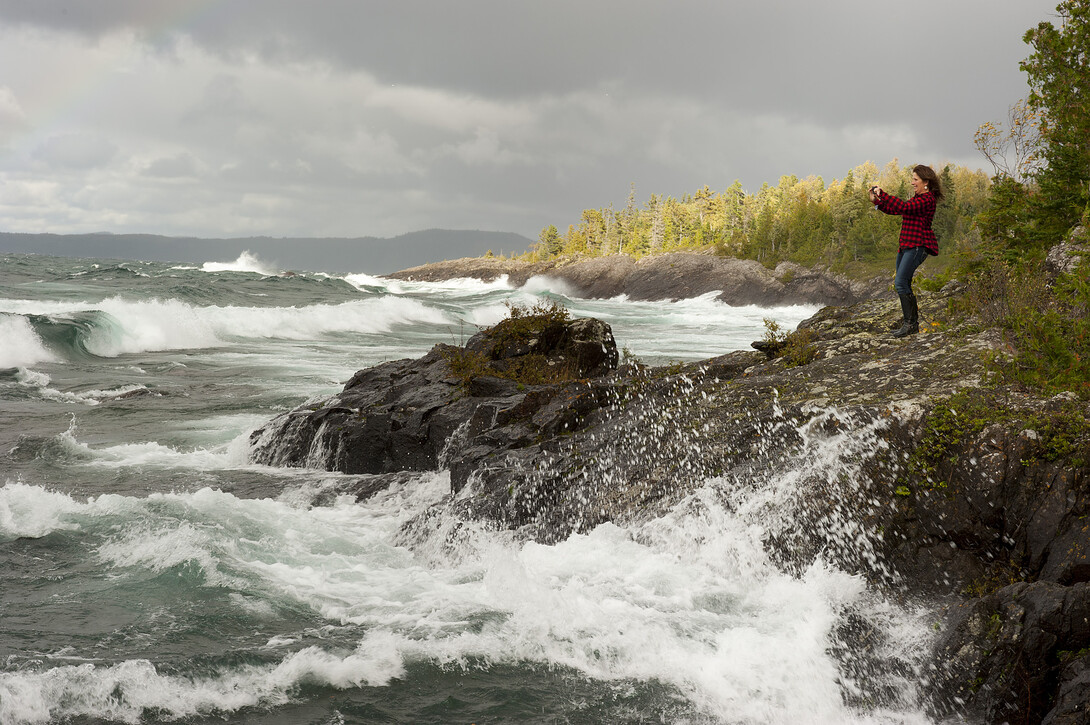
The Group of Seven captured hundreds of “moments” on canvas, wood panels and sketchbooks, but they didn’t capture them all.
Algoma is inextricably connected to the Group of Seven, Canada's most revered group of landscape artists. Art historians have long acknowledged the role Algoma and the North Shore of Lake Superior played in their formation. Following World War I, they visited Algoma to paint her wilderness woods and waters, and in the process helped to change the course of Canadian art.
"No country can be a great nation until it has great art." – Lawren Harris, Canadian Group of Seven member.
Throughout Algoma, we still encounter scenes and situations that mirror the experience of the Group of Seven – places they surely would have painted if they’d had the opportunity. The discovery of such places constitutes a Group of Seven (G7) moment.
My Group of Seven Moments
My wife Francine and I live in the Wawa area and have been exploring the Algoma landscape for decades. We’ve always been aware of the Group of Seven, but with the recent focus on their work, we are experiencing a new appreciation for their art, and for the land they painted.
One sure way to harvest G7 moments is to travel the Grand Algoma Drive. This spectacular 616-km circle tour takes you along the Lake Superior coastline, then inland through the heart of Algoma.
Along the route, new interpretive panels showcase Group of Seven Moments, on either the actual location of a Group of Seven painting site or a location where you can connect with the Group’s cultural history.
We have seen some of the new interpretive panels and highly recommend this to visitors, but this time we decide to travel the full Grand Algoma Drive to see what other Group of Seven moments we can discover.
MOMENT #1
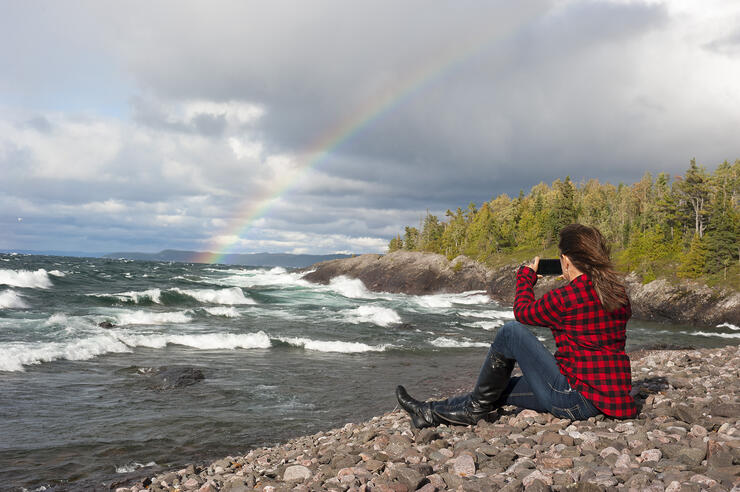
We start from Wawa, heading south on TransCanada Highway 17 as it winds through the maple-topped granite of Lake Superior Provincial Park, providing glimpses of the sand and rock coast at places like Old Woman Bay and Katherine’s Cove. But it isn’t till we’re south of the Park that a dramatic sky, fierce waves and a jagged coastline inspire a photography stop. Shafts of light break through holes in the clouds and a rainbow appears intermittently with the changing sunlight as waves break against the cobble shore.
MOMENT #2
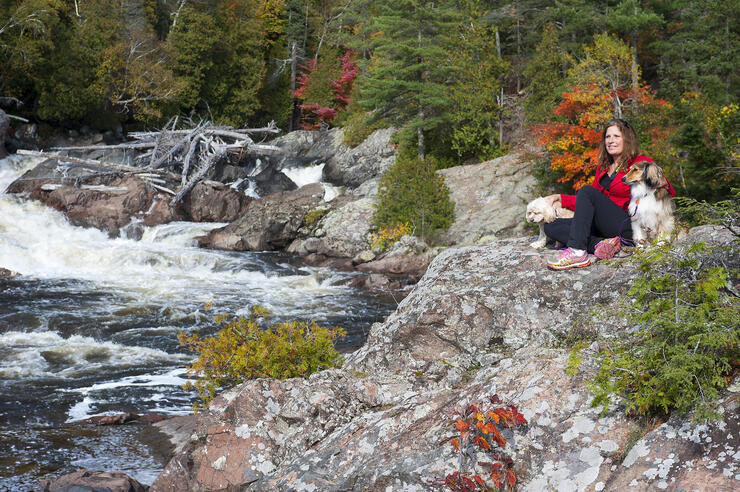
It’s hard to drive past the Chippewa River without pulling into the parking lot for a closer look. We lace up our hiking boots and scramble up a series of wooded paths accessing several tiers of the dramatic falls. Recent rains contribute to the relentless flow of white water gushing within a granite chasm. We join the towering pines and gnarled cedar that cling to the rock and bask in the spray and the roar.
MOMENT #3
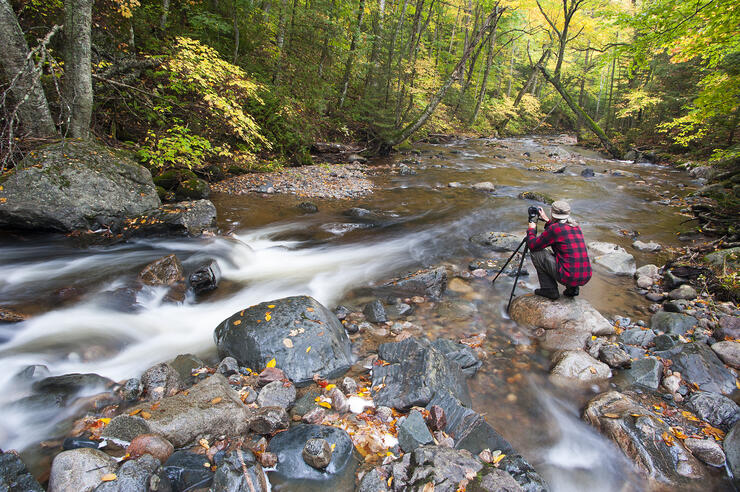
High water inspires a side trip to Stokely Creek Lodge, where the tea-stained waters of Stokely Creek widen over a rock ledge a stone’s throw from the lodge. This is a powerful place to photograph moving water, with a veil of white gushing over the falls and autumn leaves clinging to the boulders at its base. But today I turn my attention downstream, where the persistent little creek disappears into the forest’s melange of rich autumn hues.
MOMENT #4
At Sault Ste. Marie, Lake Superior drains into the St. Mary’s River before widening into the North Channel of Lake Huron. East of the Sault, tracts of agricultural land are cradled within a rolling landscape, but shortly after turning north up Highway 129 at Thessalon, the road winds around hardwood hills and granite-rimmed lakes.
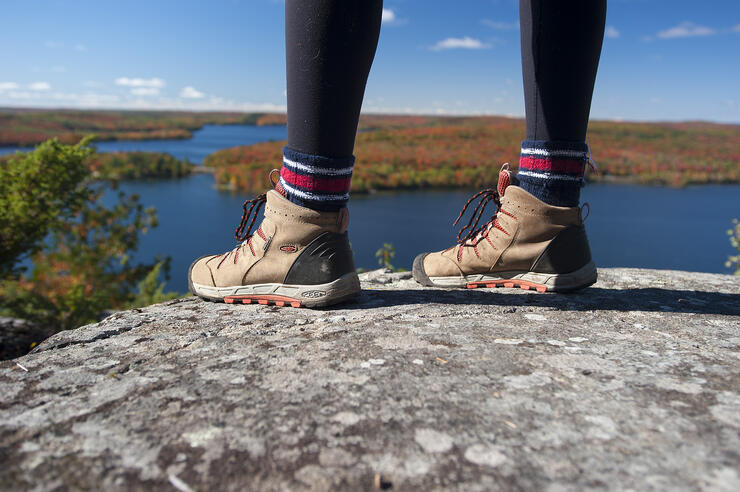
At Cummings Lake, we park at a trailhead and hike a narrow path to a series of lookouts atop a sheer cliff face. Under the shade of oak and white pine we gaze out over Cummings and Tunnel Lakes, their dark waters delineated by the reds of maple-capped shorelines.
MOMENT #5
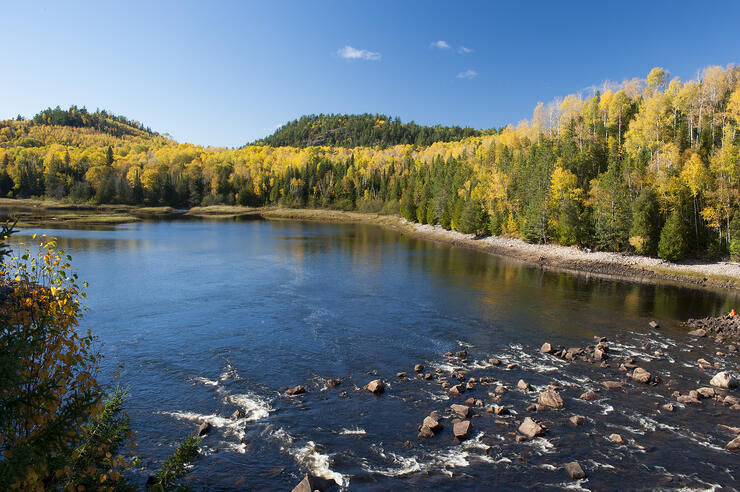
Squeezed between towering bluffs, Highway 129 and the Mississagi River share a meandering path through an abrupt landscape. With the riffles and rapids of the river on one side and granite cliffs on the other, the challenge of navigating this winding road is complicated by the necessity of soaking in the surroundings. Although the twists and turns of Highway 129 beg to be driven swiftly, the scenery can’t be ignored and we are content to drive slowly, pulling to the shoulder for photo ops. At the highway bridge over the river, we park and watch as the rapids of the Mississagi nourish the deeper, darker waters that disappear into autumn’s panorama of green and gold.
MOMENT #6
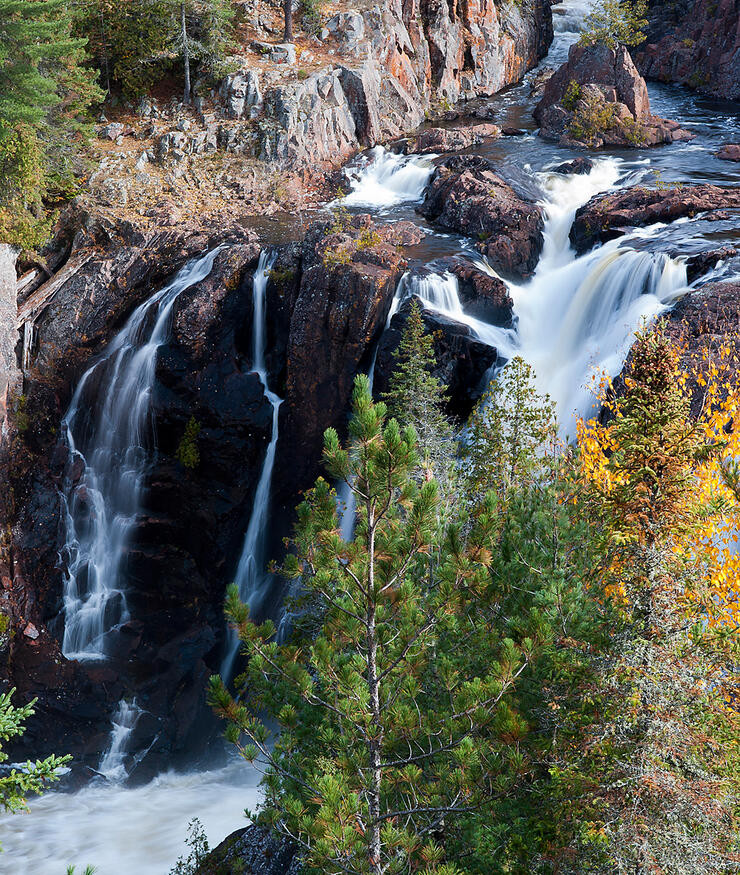
A narrow dirt road leads to the trail to Aubrey Falls. At less than a kilometre, it’s a rewarding trek. From a footbridge over the river, we see the vertical drop of a single falls, but the path continues to a rock bluff where we watch as the Mississagi divides into long tendrils of white, coursing through several channels along a serrated edge of jagged rock.
MOMENT #7
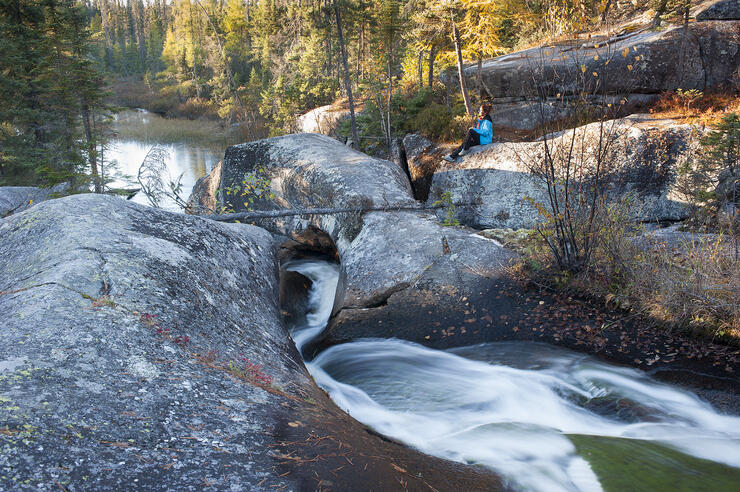
By the time 129 becomes Highway 101 near Chapleau, the sun is low in the sky. At Potholes Provincial Park we make the most of the fading daylight by hiking the 350 metre trail to a curious mass of sculpted rock. Said to be the product of glacial erosion from thousands of years ago, the tenacious flow of the diminutive Kinniwabi River now circulates within the giant potholes, guided by the curvaceous channels carved like a natural waterslide into the bedrock.
It is not difficult to find Group of Seven moments in Algoma. In a land that looks much as it did 100 years ago, they rest deep within the wilderness or right along the highway – fleeting, ever-changing, and infinite.
How to do this trip
Along the Grand Algoma Drive, there are many beautiful natural attractions, excellent places to stay, eateries, shops, historic and cultural sites and incredible photo opportunities. I would recommend a minimum of two days to create and experience your own G7 moments.
Group of Seven Attractions in Algoma
Moments of Algoma – Learn about the Group of Seven’s paintings in Algoma and locations of interpretive panels.
Art Gallery of Algoma – Exhibits by Group of Seven and local artists.
Agawa Canyon Tour Train – This one-day rail excursion takes you into the same stunning wilderness were members of Group of Seven lived and worked nearly 100 years ago.
Don’t Miss
Agawa Indian Crafts & The Canadian Carver
Grand Algoma Drive Tourism Information
Places to Stay, Eat and Visit - Algoma Country Regional Tourism
Recommended Articles

11 Jaw-Droppingly Beautiful Landscapes

2025 Triathalons
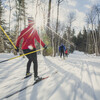
Best Cross Country Ski Spots
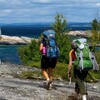
Backpacking Trails in Ontario
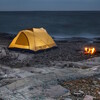
Crown Land Camping
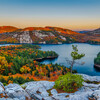
Natural Highs
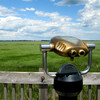
Ontario Birding Checklist

Rise and Glide
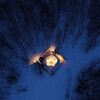
Go Winter Glamping

Dog Sledding in Ontario
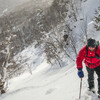
Backcountry Skiing in Ontario
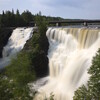
Best Waterfalls in Ontario
9 of the Most Beautiful Fall Destinations
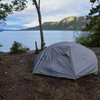
Insider’s Guide to Sleeping Giant
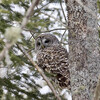
Where to See Ontario's Coolest Wildlife

Top of the Giant Trail

Go Foraging in Ontario
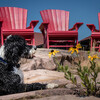
Dogs Welcome!
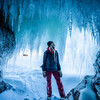
Plan Your Adventure
